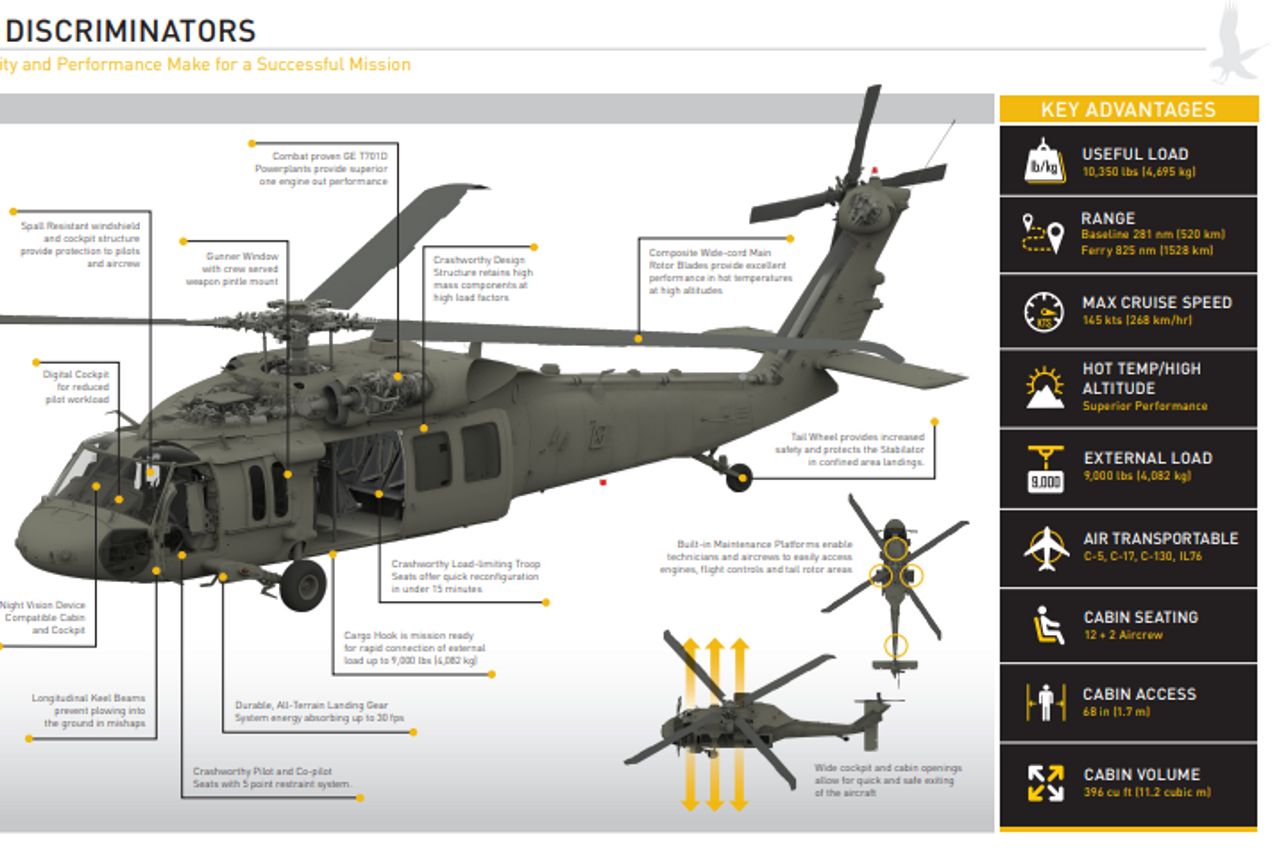How the Sikorsky S 70 Stands Out in the Helicopter Sector
How the Sikorsky S 70 Stands Out in the Helicopter Sector
Blog Article
Modernized Vertical Lift System With Advanced Composite Structures and Enhanced Precaution
In the world of upright lift platforms, a significant change towards modernization has been observed, driven by the combination of sophisticated composite frameworks and heightened security procedures. These enhancements stand for a pivotal development in the design and performance of lift platforms, promising raised efficiency and reliability across different industries (sikorsky s 70). As industries pursue better operational precision and safety criteria, the utilization of composite products and advanced safety and security functions has actually become critical. In exploring the merging of technology and safety in contemporary lift platforms, an engaging narrative emerges, showcasing the possibility for transformative developments that deal with the ever-evolving demands of industrial sectors.
Evolution of Upright Lift Systems

The advancement of upright lift systems can be mapped back to standard pulley-block systems and early elevator designs. Over time, advancements such as hydraulic systems, electrical motors, and progressed control mechanisms have vastly boosted the efficiency and safety and security of these systems. Suppliers have actually likewise focused on enhancing the security, reach, and load-bearing capacities of vertical lift platforms to meet the varied demands of different industries.
In addition, the integration of smart innovations like sensing units, IoT connection, and automation attributes has actually better changed the abilities of modern-day upright lift platforms. These technological enhancements not just boost operational performance but additionally make certain enhanced safety and security requirements for workers using these systems at different heights. The continual development of vertical lift systems underscores their indispensable duty in boosting vertical mobility throughout sectors.
Combination of Advanced Composite Frameworks

In addition, the usage of innovative composite materials allows for more complicated and optimized architectural styles, allowing designers to customize the system's buildings to meet details efficiency needs. On the whole, the incorporation of sophisticated composite frameworks in modern upright lift platforms stands for a considerable innovation in aerospace innovation, leading to extra effective, dependable, and much safer airborne transport systems.
Improved Safety And Security Steps Application
Carrying out boosted safety steps is essential in making sure the ideal performance and reliability of modern vertical lift systems. One key facet of boosted safety and security actions is the assimilation of innovative sensing unit technologies to check numerous parameters in real-time.

Market Applications and Advantages
With advancements in innovation and design, improved upright lift systems have discovered varied applications across numerous industries, offering substantial benefits in performance and performance. In the production field, these systems simplify the procedure of transferring heavy materials and tools within centers, decreasing manual handling and enhancing operational efficiency. The building and construction industry take advantage of upright lift systems by making it possible for workers to gain access to raised locations safely and efficiently, boosting total job timelines. Warehousing and logistics companies use these systems to maximize storage area utilization and facilitate quicker selecting and packaging processes.
Moreover, upright lift platforms play an essential function in the maintenance and repair work of facilities such as bridges, high-voltage line, and buildings, enabling specialists to get to hard to reach areas effortlessly (sikorsky s 70). The aviation industry additionally leverages these systems for airplane upkeep and setting up jobs, boosting operations effectiveness and ensuring employee security at elevations. Overall, the extensive fostering of up-to-date vertical lift platforms across industries underscores their versatility and the substantial enhancements they give different procedures
Future Trends in Lift Platform Modern Technology
Integrating advanced automation and smart functions, lift system technology is positioned to reinvent upright transport systems in the close to future. One key pattern is the assimilation of Internet of Points (IoT) technology, enabling lift systems to connect real-time data for predictive upkeep, maximizing performance, and enhancing safety and security. Synthetic intelligence and equipment learning formulas are additionally being incorporated to analyze patterns, predict prospective concerns, and enhance efficiency. Furthermore, look at this site the use of sophisticated products such as carbon fiber compounds is on the surge, offering increased durability and strength while decreasing overall weight. Boosted precaution, including biometric authentication and emergency action systems, are becoming standard features to ensure passenger security. Furthermore, modular styles and adjustable arrangements are gaining appeal, allowing for better versatility to different environments and demands. As lift system technology remains to develop, these fads are established to form the future of vertical transportation, site making it more efficient, risk-free, and user-friendly.
Verdict
Finally, the up-to-date upright lift platform showcases the advancement of technology in the sector. By integrating advanced composite structures and enhanced precaution, this system uses increased efficiency and safety for numerous applications. The market can profit greatly from these advancements, and future trends in lift platform modern technology are most likely to proceed surpassing these innovations for also higher success and performance.
In the world of vertical lift systems, a significant change towards innovation has been observed, driven by the integration of innovative composite structures and heightened safety and security steps. The continual evolution of upright lift systems highlights their indispensable function in improving upright movement throughout industries.

The incorporation of innovative composite frameworks in modern vertical lift systems has significantly improved their architectural stability and performance capabilities. By incorporating these sophisticated composites into the layout and building of upright lift platforms, makers can minimize general weight, rise load-carrying ability, and boost the platform's toughness and longevity.
Applying enhanced safety actions is imperative in making certain the optimal efficiency and dependability of modern vertical lift systems.
Report this page